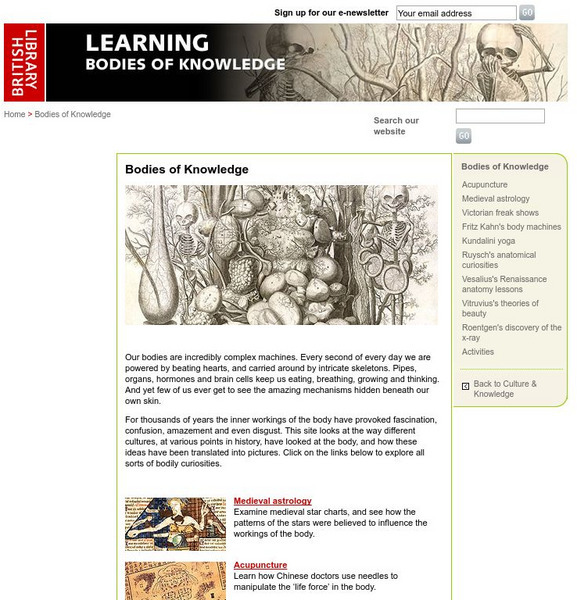British Library
British Library: Bodies of Knowledge
Series of illustrated essays on the different ways that the human body has been represented in art and science across history considers medieval astrology, the ancient Chinese practice of acupuncture, Vitruvius's notion of body symmetry,...
Minneapolis Institute of Arts
Minneapolis Institute of Arts: Restoring a Masterwork
Go behind the scences and get a close look at how an artwork is restored. You can choose to view Castiglione's "The Immaculate Conception" or Guercino's "Erminia and the Shepherds."
Institute for Dynamic Educational Advancement
Web Exhibits: Investigating Bellini's "Feast of the Gods"
This site provided for by WebExhibits.org describes, Giovanni Bellini's canvas of "Feast of the Gods." Technical innovations in conservation science over the last 50 years have enabled specialists to obtain X-ray, infrared and...
Curated OER
Educational Technology Clearinghouse: Clip Art Etc: Wilhelm Rontgen
(1845-1923) German scientist she produced and detected electromagnetic radiation in a wavelength range today knob as X-rays or Rontgen rays, an achievement that earned him the first Nobel Prize in Physics in 1901.
Curated OER
Educational Technology Clearinghouse: Clip Art Etc: William Roentgen
A German physicist, of the University of Wurzburg, who, on Nov. 8, 1895, produced and detected electromagnetic radiation in a wavelength range today known as x-rays or Rontgen Rays.
Curated OER
Web Gallery of Art: The Ray
An image of "The Ray", created by Jean-Baptiste-Simeon Chardin in 1728 (Oil on canvas, 114 x 146 cm).
Curated OER
Web Gallery of Art: The Ray of Sunlight
An image of "The Ray of Sunlight", created by Jacob Isaackszon Van Ruisdael, c. 1660 (Oil on canvas, 83 x 99 cm).



